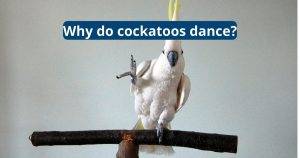How to Care For a Zebra Finch

Zebra finches are easy to care for and make wonderful pets. They are friendly by nature and adapt well to living close to humans. They can also be trained easily, if given the right training by the owner. These birds are a monogamous species that pair for life. Males have a distinctive chest barring and orange cheeks, unlike the females.
Flight cage
The flight cage is one of the most important tools for keeping your pet finch healthy and happy. Finches should be allowed out of their cages daily to fly around and get some exercise. This will also help prevent stress which can lead to feather picking.
The minimum cage size for a pair of zebra finches should be 14 inches by 24 inches. Cage bar spacing should be no more than 1/2 inch. A cage made for cockatiels may be suitable as long as the bar is not too wide.
Zebra finches are not known for hand taming like parrots but may be trained to alight on your finger when offered a treat. They tend to be aggressive towards their cage mates when they are stressed so they are not recommended for young children. However, they do well with dogs and cats as long as the animal is calm and is not trying to chase them.

Food
In the wild, zebra finches live in large gregarious flocks and eat a wide variety of seeds. They can also survive on small amounts of other types of food, including vegetables, fruits, berries and flowers.
In captivity, a zebra finch’s diet should consist of a mixture of fresh green leafy foods (such as romaine lettuce, watercress, spinach and dandelion greens), spray millet, pieces of whole grain bread and some commercial pelleted bird feed. Boiled eggs or a commercial egg substitute are also suitable for young and breeding zebra finches.
Zebra finches are garrulous birds that often sing and call loudly to each other. They can be sexed by the color of their beaks, which are deeper red in males. Males are often more aggressive than females. However, they typically squabble only when their territory or a mate is threatened. They will not fight with humans, but may flutter on the ground or fly off their perch if startled.
Water
Zebra finches need plenty of water to survive, particularly during breeding. Their kidneys are efficient at removing moisture, and they’re able to drink even brackish water. They often take water from ponds, rivers, and lakes.
These birds are highly adaptable and can thrive in many different habitats, though they prefer grasslands and savannahs to more dense forests. They can also live in overgrown fields, scrub, farms, ranches, and gardens.
Male zebra finches begin singing at puberty and are loud and boisterous. Their song begins with a series of beeps, meeps, and chirps that progress into a rhythmic tune with varying complexity.
Female zebra finches are less vocal and can be difficult to tell apart from the males. They have a buff wash over their flanks and cheeks with no spots. Females also lack a beak marking and have a more muted coloration overall. You can sex a zebra finch by the intensity of its beak coloring or if it can’t be sexed by appearance alone, by its behavior.
Nest
The nest is usually a simple grass clump, but can also be a twig bundle or a string of untwined hemp rope. Pet shops sell boxes of short strings that you can cut off to give to your finches for building. Make sure they are not too long so the birds or chicks don’t get entangled in them.
The zebra finch has a pair bond that is maintained by the ability to see and hear the partner. However, high mortality rates cause frequent re-pairings. Despite this, the pair bond is not broken by a separation or a failure to lay a clutch together.
The Penguin mutation, which is a recessive color change, suppresses the black markings on cock and hen feathers, including the chest bars, tear marks, and zebra lines typical of standard Normal or Fawn finches. Pairing a Penguin cock with a normal hen will produce visual Normal chicks. However, the chicks will carry the Penguin gene.



